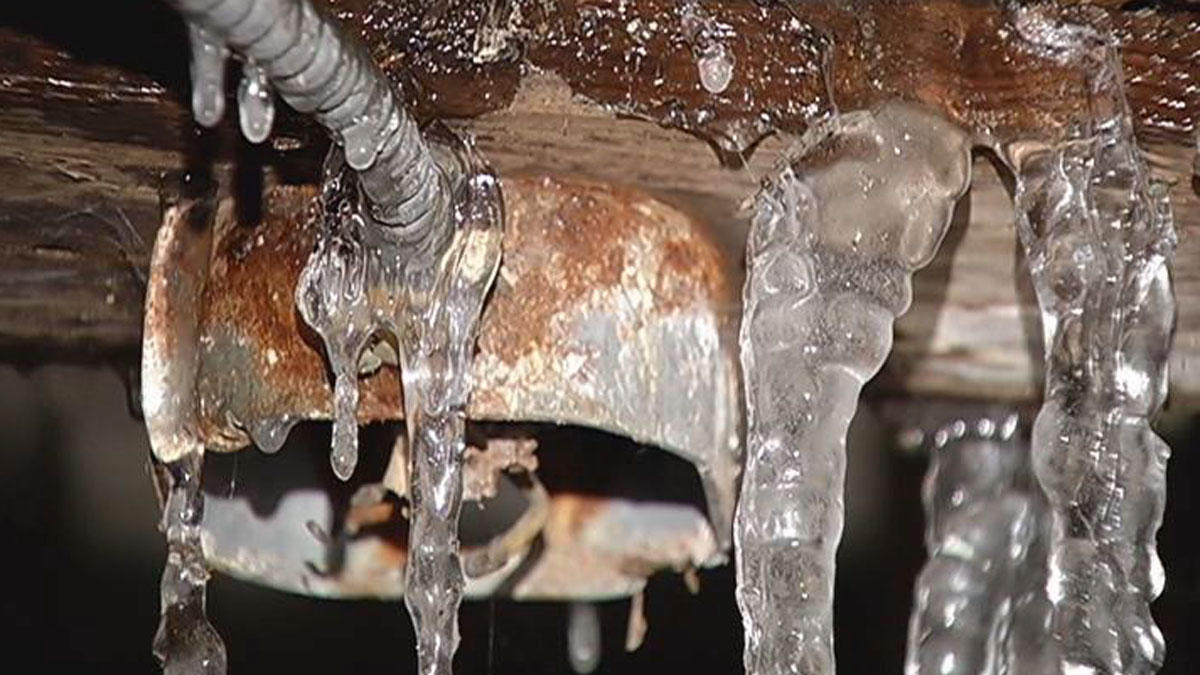Essential Methods for Preventing Frozen Plumbing in Cold Weather
Essential Methods for Preventing Frozen Plumbing in Cold Weather
Blog Article
This article underneath on the subject of Prevent Frozen Pipes is absolutely fascinating. Try it and draw your own assumptions.

Cold weather can damage your plumbing, specifically by freezing pipes. Here's how to prevent it from happening and what to do if it does.
Introduction
As temperature levels decline, the threat of frozen pipelines increases, possibly causing costly fixings and water damages. Comprehending just how to prevent frozen pipes is vital for house owners in chilly environments.
Prevention Tips
Insulating prone pipelines
Wrap pipes in insulation sleeves or make use of heat tape to safeguard them from freezing temperatures. Concentrate on pipelines in unheated or external locations of the home.
Home heating strategies
Keep interior areas appropriately warmed, especially areas with plumbing. Open up cupboard doors to enable warm air to circulate around pipelines under sinks.
Exactly how to determine frozen pipes
Look for decreased water flow from faucets, unusual odors or sounds from pipes, and visible frost on exposed pipelines.
Long-Term Solutions
Architectural modifications
Think about rerouting pipes far from outside walls or unheated locations. Include extra insulation to attics, cellars, and crawl spaces.
Updating insulation
Buy high-quality insulation for pipelines, attic rooms, and wall surfaces. Proper insulation assists keep consistent temperatures and decreases the risk of icy pipelines.
Protecting Outside Pipes
Garden hose pipes and outdoor taps
Separate and drain pipes yard hose pipes before wintertime. Install frost-proof spigots or cover outside taps with shielded caps.
Understanding Frozen Pipelines
What creates pipelines to freeze?
Pipelines freeze when exposed to temperature levels listed below 32 ° F (0 ° C) for prolonged durations. As water inside the pipes ices up, it increases, putting pressure on the pipeline walls and potentially creating them to break.
Risks and damages
Frozen pipelines can cause water interruptions, property damage, and costly repairs. Burst pipelines can flooding homes and cause considerable structural damage.
Indicators of Frozen Pipes
Recognizing icy pipes early can stop them from breaking.
What to Do If Your Pipes Freeze
Immediate activities to take
If you believe frozen pipes, keep taps open up to alleviate stress as the ice melts. Use a hairdryer or towels soaked in hot water to thaw pipes gradually.
Final thought
Protecting against icy pipes calls for aggressive steps and fast feedbacks. By understanding the causes, signs, and preventive measures, home owners can shield their pipes throughout cold weather.
Helpful Tips to Prevent Frozen Pipes this Winter
UNDERSTANDING THE BASICS: WHY PIPES FREEZE AND WHY IT’S A PROBLEM
Water freezing inside pipes is common during the winter months, but understanding why pipes freeze, and the potential problems it can cause is crucial in preventing such incidents. This section will delve into the basics of why pipes freeze and the associated problems that may arise.
THE SCIENCE BEHIND FROZEN PIPES
When water reaches freezing temperatures, it undergoes a physical transformation and solidifies into ice. This expansion of water as it freezes is the primary reason pipes can burst. As the water inside the pipe freezes, it expands, creating immense pressure on the walls. If the pressure becomes too great, the pipe can crack or rupture, leading to leaks and water damage.
FACTORS THAT CONTRIBUTE TO PIPE FREEZING
Low Temperatures: Extremely cold weather, especially below freezing, increases the risk of pipes freezing. Uninsulated or Poorly Insulated Pipes: Pipes located in unheated areas, such as basements, crawl spaces, or attics, are more prone to freezing. Insufficient insulation or lack of insulation altogether exacerbates the problem. Exterior Wall Exposure: Pipes running along exterior walls are susceptible to freezing as they encounter colder temperatures outside. Lack of Heating or Temperature Regulation: Inadequate heating or inconsistent temperature control in your home can contribute to frozen pipes. PROBLEMS CAUSED BY FROZEN PIPES
- Pipe Bursting: As mentioned earlier, the expansion of water as it freezes can cause pipes to burst, resulting in significant water damage.
- Water Damage: When pipes burst, it can lead to flooding and water damage to your property, including walls, ceilings, flooring, and personal belongings.
- Structural Damage: Prolonged exposure to water from burst pipes can compromise the structural integrity of your home, leading to costly repairs.
- Mold and Mildew Growth: Excess moisture from water damage can create a favorable environment for mold and mildew growth, posing health risks to occupants.
- Disrupted Water Supply: Frozen pipes can also result in a complete or partial loss of water supply until the issue is resolved.
WHY CERTAIN PIPES ARE MORE PRONE TO FREEZING
- Location: Pipes located in unheated or poorly insulated areas, such as basements, crawl spaces, attics, or exterior walls, are at higher risk of freezing.
- Exterior Pipes: Outdoor pipes, such as those used for irrigation or exposed plumbing, are particularly vulnerable to freezing as they are directly exposed to the elements.
- Supply Lines: Pipes that carry water from the main water supply into your home, including the main water line, are critical to protect as freezing in these lines can affect your entire plumbing system.
- Underground Pipes: Pipes buried underground, such as those connected to sprinkler systems or outdoor faucets, can be susceptible to freezing if not properly insulated.
https://busybusy.com/blog/helpful-tips-to-prevent-frozen-pipes-this-winter/

I ran across that blog posting on Preventing and dealing with frozen pipes when doing a lookup on the search engines. Sharing is caring. Helping people is fun. We thank you for reading our article about Prevent Frozen Pipes .
Get A Free Quote Report this page